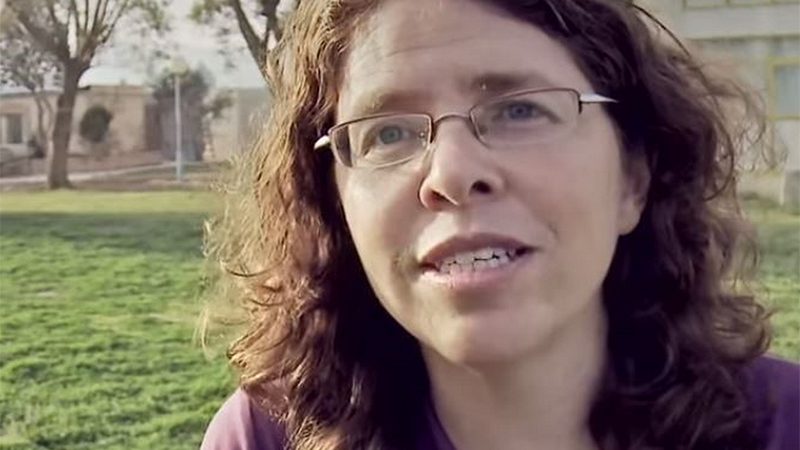David Harris

Feature Program: Sophie’s Journey to Kibbutz Hannaton
Founded in 1983 as a Masorti kibbutz, Kibbutz Hannaton in the Lower Galilee is presently undergoing a move to become a “kibbutz mitchadesh” (a revitalized kibbutz). Through the scope and variety of activities in the community, members will be involved in a comprehensive and pluralistic community based on living Masorti Judaism.
It will maintain some of the cooperative and social elements of the original kibbutz system, while implementing some fundamental changes including a differential salary system and home ownership. The kibbutz is committed to communal responsibility, social awareness, environmental conscientiousness, and spiritual consciousness.
An energetic, committed group of twenty mostly young Israeli families have elected to join the now privatized kibbutz in the coming year or two, with plans to absorb an additional thirty families during the next few years. These families will live on Hannaton, but most will be employed in jobs outside of the kibbutz.
The Jewish Federation of Cincinnati has allocated $140,000 in Israel & Overseas Directed Funding in fiscal year 2016 to fund efforts toward Israeli pluralism, including the Masorti Movement’s program that trains post-highschoolers in pluralistic Judaism prior to their military service. —DanielleMy Journey to Kibbutz Hannaton
By Sophie Fellman Rafalovitz
My journey to Hannaton started at age fourteen in 1989. We came up here for a madrichim training course with all the NOAM high schoolers.
“Hannaton, Kadima Hannaton!” (Hannaton, go forward Hannaton!) we sang until our voices were hoarse. As the youth movement of the Masorti Movement, Hannaton was our destination kibbutz—the “dream” was to settle there after the army or the university.
We kept coming here through high school and then spent our pre-army gap year living here. The year was incredibly hard on everyone. We cut off our ties with the place (in retrospect: we were 27 eighteen-year-olds … living next door to families with young children—not a promising mix to be sure) and moved on to Kibbutz Ketura where we all have connections to this day.
No one moved to a kibbutz—the kibbutz ideal didn’t really fit in to any of our plans. Our group members spread out into universities and later married and moved into different Israel cities. Hannaton became a faraway memory.
Years later, my eldest son was born while we were on shlichut (time abroad as an emissary) in Los Angeles. Before we returned, I knew I wanted us to be affiliated with a Masorti synagogue—or at least a liberal one. Preferably within walking distance from our future home. We discovered that that was no easy task. Communities that were attractive to us were ones that we couldn’t afford to live in. So we compromised by moving to a city that was a 20-minute drive from a congregation that we loved. I convinced myself that this was okay. I would find a school where I could have impact and we would be part of the Zichron community. When the new Kibbutz Hannaton was becoming a reality, Rabbi Yoav Ende called me and said, “Sophie—our dream can come true! We can go live in Hannaton just like we wanted.” I replied that no way were we moving there. We were happy in our town and had just bought a house. We loved our Ve’Ahavta community and things were going as planned.
What I didn’t realize is that raising a liberal Jewish family in a place with no community is such an odd thing to people in Israel. When my eldest son finished first grade I understood that what I perceived as the beautiful fluidity of Conservative Judaism was nothing but confusion and isolation. Don’t want my son to party on Shabbat? We must to go the Orthodox school. Your Mommy reads from the Torah? Who are you? What are you?
After my son finished first grade, we left for shlichut in Chicago. In the amazing Lakeview community, in our amazing multi-denominational Chicago Jewish Day School, for the first time, as a family we didn’t have to explain any of our practices. My role in the family and out of it as Keeper of Tradition left space for just being spouse and mom and shlicha (community emissary).
When we finished our shlichut, it was obvious that we must find a community. Communities with young families in Israel are rare to find. However, we had visited Hannaton several times and had many friends there. The community seemed to be growing and attracting many people.
We went into a frenzy of going back and forth between Zichron and Hannaton. In the end, the decision was made by where we found a place to live and a good spot at the school. When the house in Hannaton became available, our stomachs shook as we decided to go for it.
We wondered whether we were doing the right thing.
Now, a year and a half later, we know that it was the right decision for us. The kids are happy and feel very much at home with our liberal Jewish views. Hannaton offers lots of community for me but doesn’t impose it for my spouse. It is quite an amazing feeling to be part of a community that is trying to make real change in Israeli society. Many issues are hard debates and very emotional struggles but in the end—that’s what making change is about, isn’t it?
The Jewish Federation is working to enable meaningful Jewish lives for Sophie and countless others through programs and institutions such as the Masorti Movement’s Kibbutz Hannaton. Thanks to your contributions to the Jewish Federation of Cincinnati, more people like Sophie can better connect to and live their Jewish heritage.

